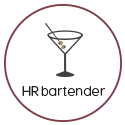(Editor’s Note: Today’s article is brought to you by our friends at Kronos, a leading provider of workforce management and human capital management cloud solutions. Managing your workforce just got a lot smarter with Workforce Dimensions, a solution designed to provide both a world-class employee experience and unprecedented levels of operational insight. Enjoy the article!)
In the first part of this series about the future of work, we talked about the need for organizations and individuals to work smarter. Part of working smarter is using the right tools. This is where decisions about technology have an immediate impact on work.
In a study published on Training Magazine, respondents talked about employee stress and burnout being linked to using outdated technology. I hate to say it, but this totally makes sense. Employees who are forced to create workarounds because they’re dealing with old technology are quickly going to get frustrated. They’re doing double or triple the work and still being held accountable to the same performance standard.
According to CIO Magazine, 93 percent of Millennials consider technology to be the most important aspect of work. And I’ll just add that I honestly believe this feeling extends beyond Millennials. No one wants to use 2-3 programs to get something done. So, what do employees what in terms of technology tools? Two things:
- They want to work in the modern cloud. This means providing technology and tools that empower employees to reach their full potential and work smarter while working their way.
- It also means configuring technology to align with the employee experience so it can create better outcomes for the organization, harness workforce innovation, and deliver exceptional results.
This may sound great in theory, but it’s actually really hard to execute in practice. That’s because legacy solutions are often hard to integrate. I asked Mike May, senior director of the Workforce Dimensions Technology Partner Network at Kronos why technology integrations are such a challenge when they’re so common in today’s business environment. “While tech integrations are commonplace in any organization, they’re often limited to batch-based data sharing at pre-determined times. Sometimes, the entire system actually has a blackout period where no one can use it. That’s just for data sharing. It’s even more challenging to embed one solution inside another to offer employees a single user experience. Instead, they’re still forced to master multiple applications, often left feeling frustrated by the friction this creates with their actual priorities at work.”
Technology Partnerships Bring Together Strengths
The good news is that organizations don’t have to build a customized solution. Technology solutions like Workforce Dimensions are creating it through strategic partnerships and features that apply specifically to your business and to your culture.
EXAMPLE #1: Microsoft and Google. While the Microsoft Office Suite is widely used for business, Google’s G Suite is also tremendously popular. Both platforms integrate with Workforce Dimensions, giving managers the ability to work with tools they are comfortable with.
Here’s an example of how they could be used alongside Workforce Dimensions. Instead of tacking up a paper schedule on the breakroom cork board or emailing the team a spreadsheet schedule, department managers can empower employees to sync their schedules with a feature such as Google Calendar, where they already track and plan their personal lives. This provides anytime access to their schedule and makes it easier to plan work around life events.
Similarly, for managers who already spend all day working in Microsoft Outlook, Workforce Dimensions integrates directly with the wildly popular email client. This means they no longer have to leave Outlook and log into Workforce Dimensions to review and approve time-off requests. Instead, they get all the information they need in a special sidebar, saving them clicks – and more importantly, time – while also responded to employee time-off requests even more quickly.

EXAMPLE #2: Rodio. If you’re not familiar (I know I wasn’t), Rodio is an artificial intelligence chatbot that facilitates conversations (like shift swaps). In today’s workplaces, email is not the most predominant form of communication. And everyone’s emails are not prioritized the same way, meaning people often delete emails without reading them. In a traditional office, this may not be a big deal…that person will go out of their way to convey the message. But what about employees in the field services industry who spend all day on the road, traveling from location to location with possibly little contact with their colleagues? Think telecom installation techs, home health givers, and janitorial workers. Or transportation and logistics, where long-haul truckers may be on the road for days at a time.
Rodio segments or compartmentalizes information so employees are part of the right conversations. The ones that make sense for them. The ones they need to pay attention to. An added benefit in the Rodio technology is that it will auto-mute when the employee isn’t working. Then send an ICYMI (in case you missed it) message when the employee returns to work.
Bringing Partnerships to Reality Benefits Employee Performance
We regularly talk about the need to align talent management strategy with business strategy. Organizations can do that through the use of technology.
A month ago, I introduced you to a company called Passport that helps organizations increase productivity when it comes to responsive scheduling and driving routes. Well, I recently heard about a partnership where Passport, Rodio, Forms.com, and Kronos partnered together to build a home health services application on top of the Kronos D5 platform, which is the foundation of Workforce Dimensions. The app is called FieldCentric and it brings patient administration, route assignments, and schedules together into a single, easy to use app. Employees no longer have to log into several apps to get their jobs done. They can focus on taking care of patients.
This is becoming a bigger and bigger focus for a dedicated team at Kronos – they’re developing a partner ecosystem to not just create integrations but bring together multiple technology partners to leverage what each does best to rapidly build new solutions that solve unique workforce business challenges on top of Kronos D5. This is exactly what we’re talking about. Giving employees a technology experience in the modern cloud will not only benefit them but the organization’s bottom-line.
P.S. If you want to learn more about the Workforce Dimensions solution and how it can benefit your organization by helping your employees work smarter, visit the Kronos website and request a demo.









Joshua Diamand says
Excellent piece. Thanks!!!